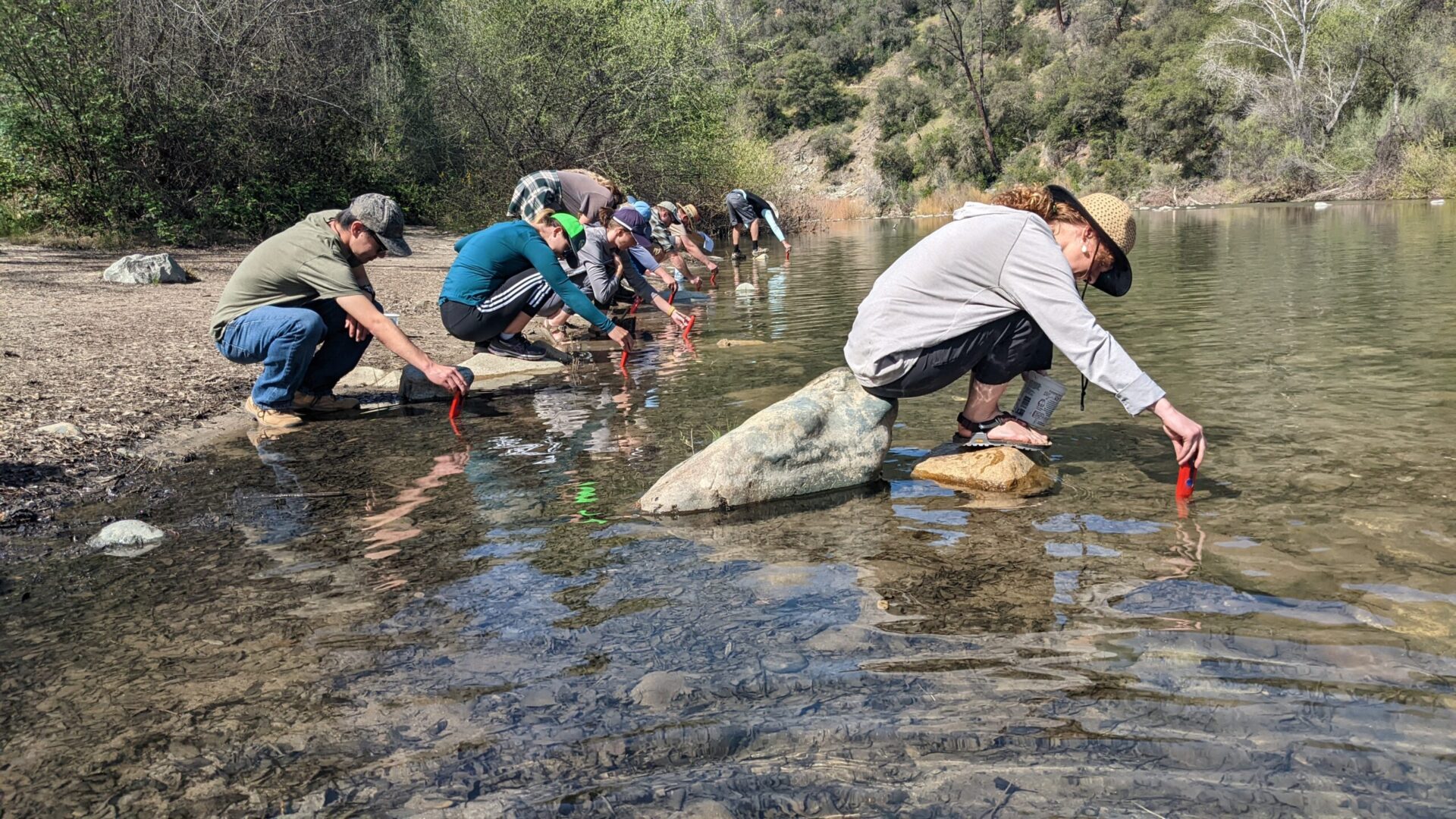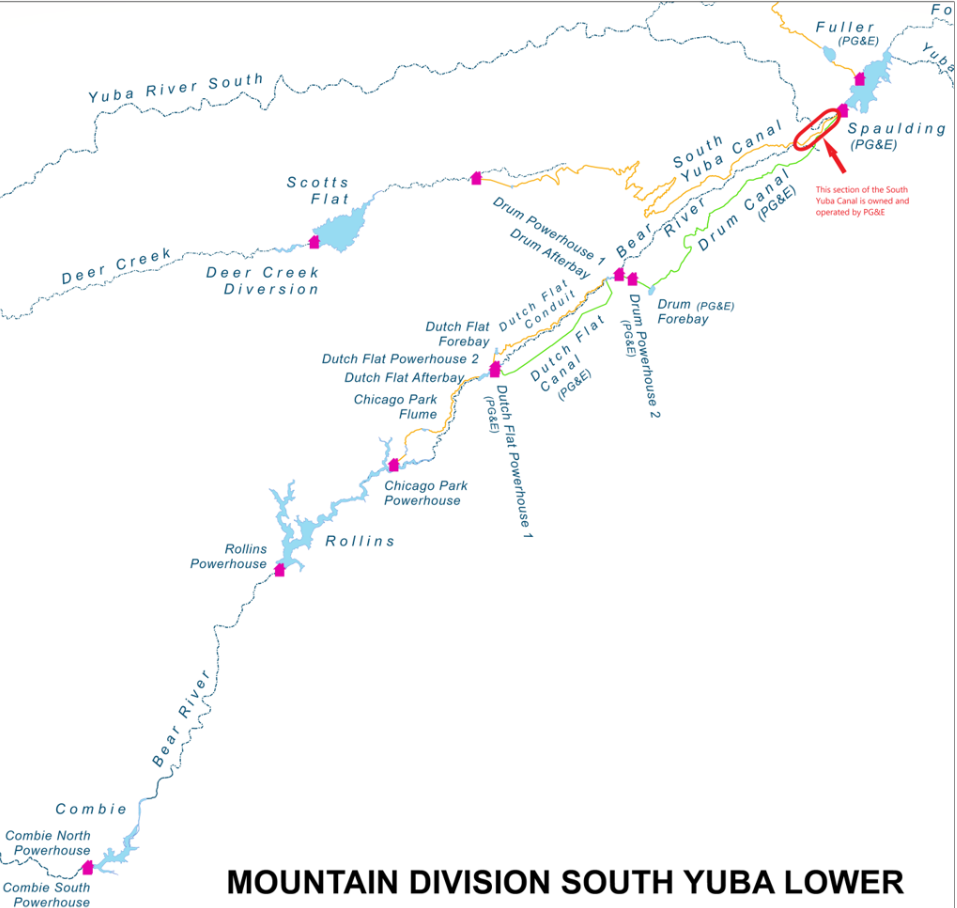SYRCL Volunteers Complete 22nd Year of River Monitoring
Each spring for the past 22 years, SYRCL trains a group of dedicated, river-loving volunteers to collect scientifically credible data for water quality parameters such as water temperature, dissolved oxygen, pH, turbidity, conductivity and the presence of invasive and sensitive species for locations throughout the Yuba watershed. Thanks to the help of our diligent volunteers, data is collected each month from March to November, allowing SYRCL to monitor the health of the watershed over time.
SYRCL’s River Monitoring program has been a prime example of a successful community science program and has been emulated throughout the nation over the last two decades. Training to become a River Monitor is free and open to all.
Contact Wrenn Cleary at rivermonitoring@yubariver.org if you’d like to become a volunteer River Monitor!
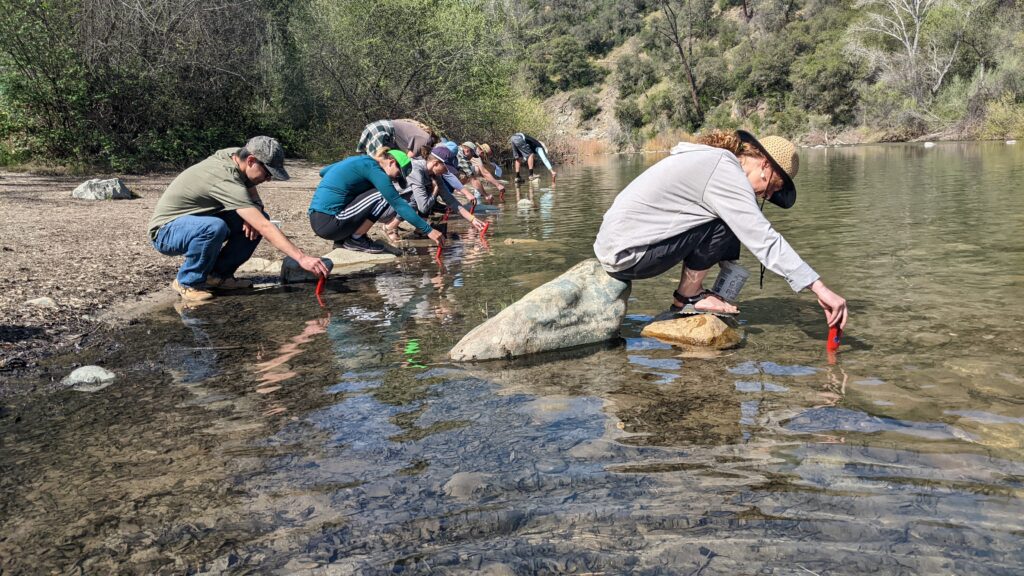
VOLUNTEER STATS:
This November SYRCL completed our 22nd year of the volunteer-based river monitoring program in the Yuba River Watershed! We had 48 active volunteers who accumulated 886 volunteer hours. We increased our total number of monitoring sites throughout the watershed to 37 this year with the addition of two sites along Deer Creek previously monitored by the Sierra Streams Institute.
Our parameters include air and water temperature, conductivity, dissolved oxygen, pH, turbidity, E. coli, Nitrates, and salinity. Having all our volunteers complete the river monitoring on the second Saturday of each month helps us take a snapshot of the watershed and evaluate any areas of concern ( e.g. over the summer months when nutrient levels can rise). Through monitoring the entire Yuba River watershed in one day, SYRCL can narrow down and examine specific influences on water quality.
Our data is available at RiverDB.org for anyone to look at and we encourage community members to check out the data throughout our watershed!
NITRATES:

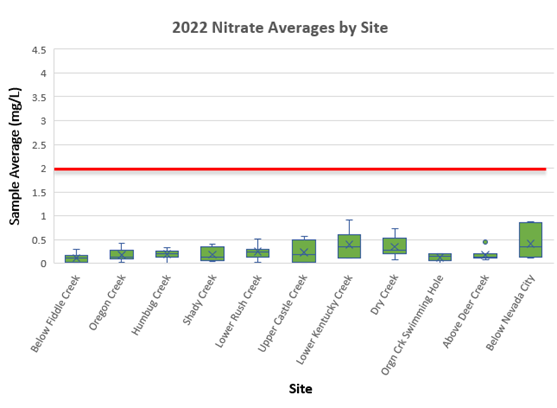
Red line: Appropriate for the protection of sensitive freshwater species: <2 mg/L
*No sites were over preferred values in 2022. Measurements above levels are from 2019, 2020, and 2021
Nitrates can come from animal manure, fertilizers used in agriculture, cannabis cultivation, and human waste. The Environmental Protection Agency’s maximum contaminant level for human health for Nitrates is 10mg/L, so the watershed is well below this limit. While there were some Nitrate values in the last three years above the guideline value of 2mg/L for sensitive freshwater species, all 2022 recordings fell below.
pH:
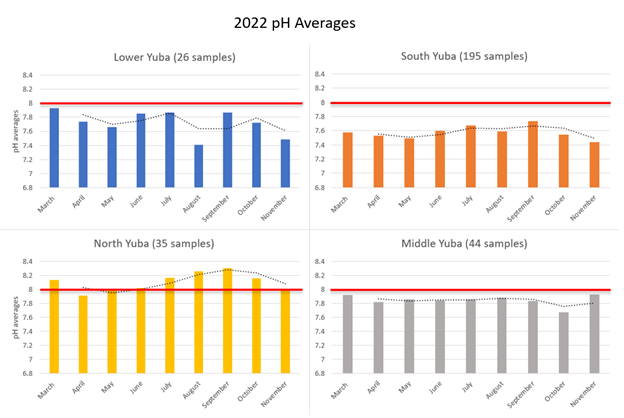
The EPA gives preferred pH range for aquatic species is about 6.5-8.0. During the summer months, the North Yuba trended higher, around 8.0, but all sites stayed within red lines indicating the preferred range of 6.5-8.5. The legacy impacts of historic hydraulic mining for gold are important to monitor for potential acid mine drainage. However, there was no indication acid mine drainage was a significant factor influencing water quality.
E. coli
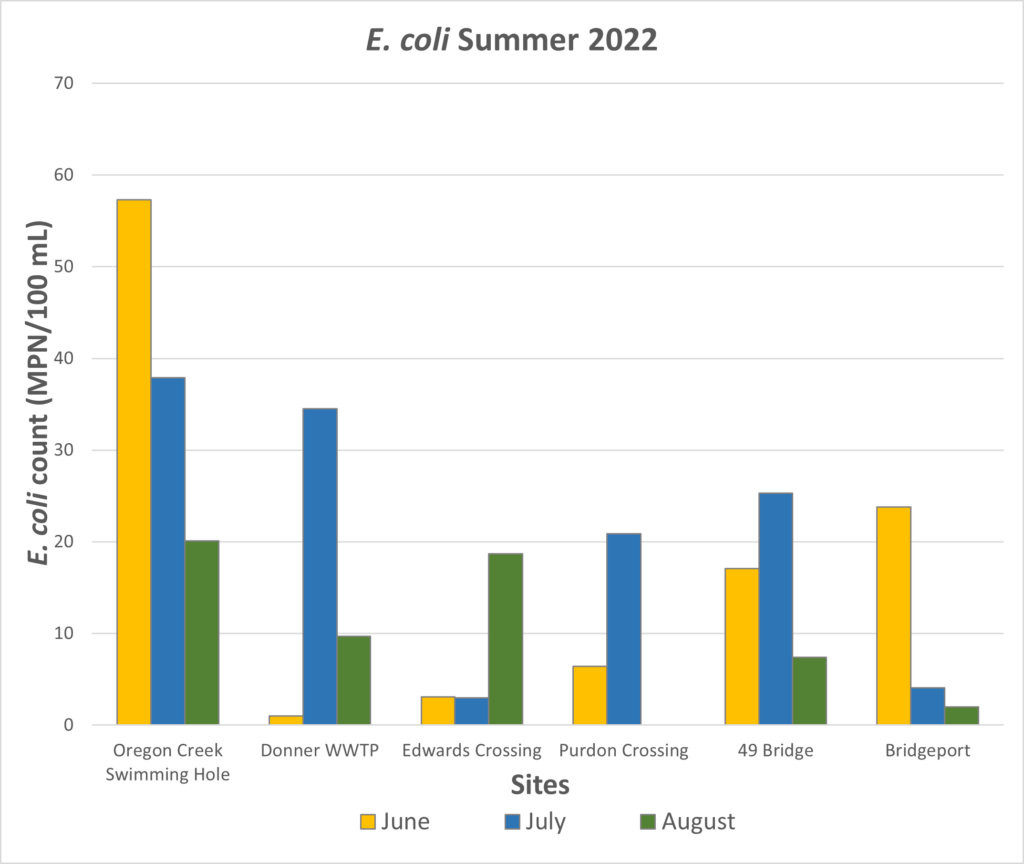
While Oregon Creek swimming hole had the highest averages of E. coli, no samples in the summer months surpassed EPA contact recreation guideline of <320 MPN/ 100 mL. Summers typically see higher E. coli levels as increasing temperatures can cause an increase in bacterial growth.
What to Expect in the Coming Months
We would like to extend a big thank you to all the River Monitors who have volunteered this past year. We admire and value your time and commitment to helping us monitor our watershed, as we could not do this without you.
We will be holding our New River Monitor orientation in mid-February and our field sampling training in late February.
The first sampling of 2023 will be the weekend of March 11th.
Training to become a River Monitor and help us protect our Yuba River is free and open to all.
Contact Wrenn Cleary at rivermonitoring@yubariver.org if you’d like to become a volunteer River Monitor and help us protect our Yuba River watershed!

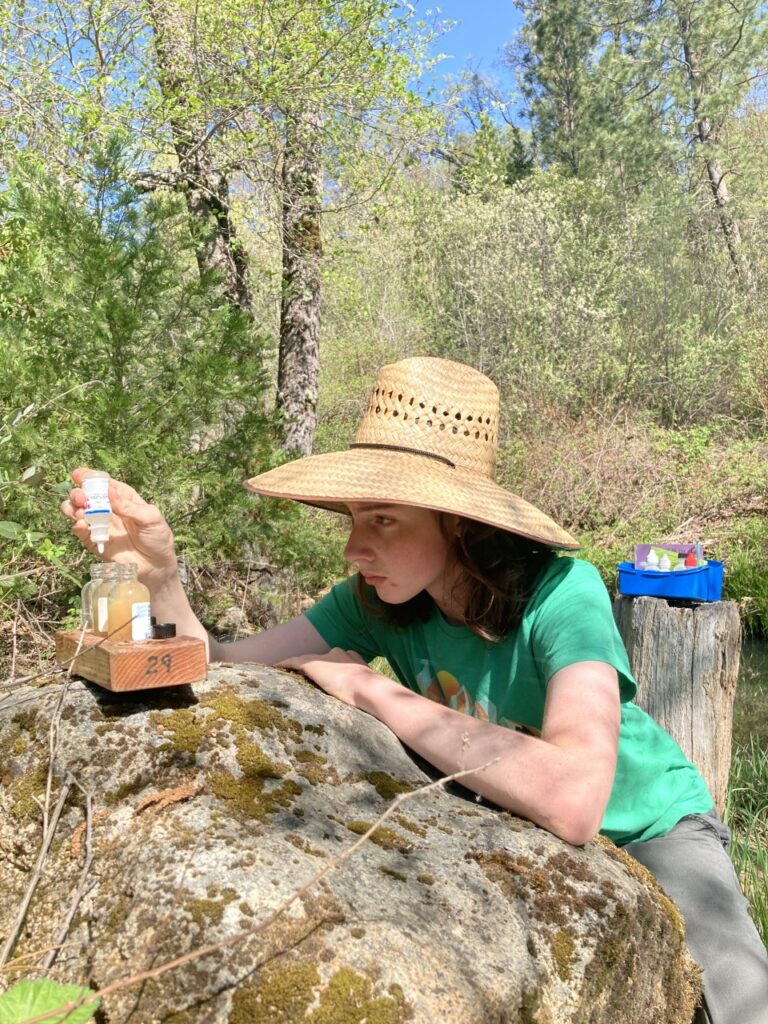
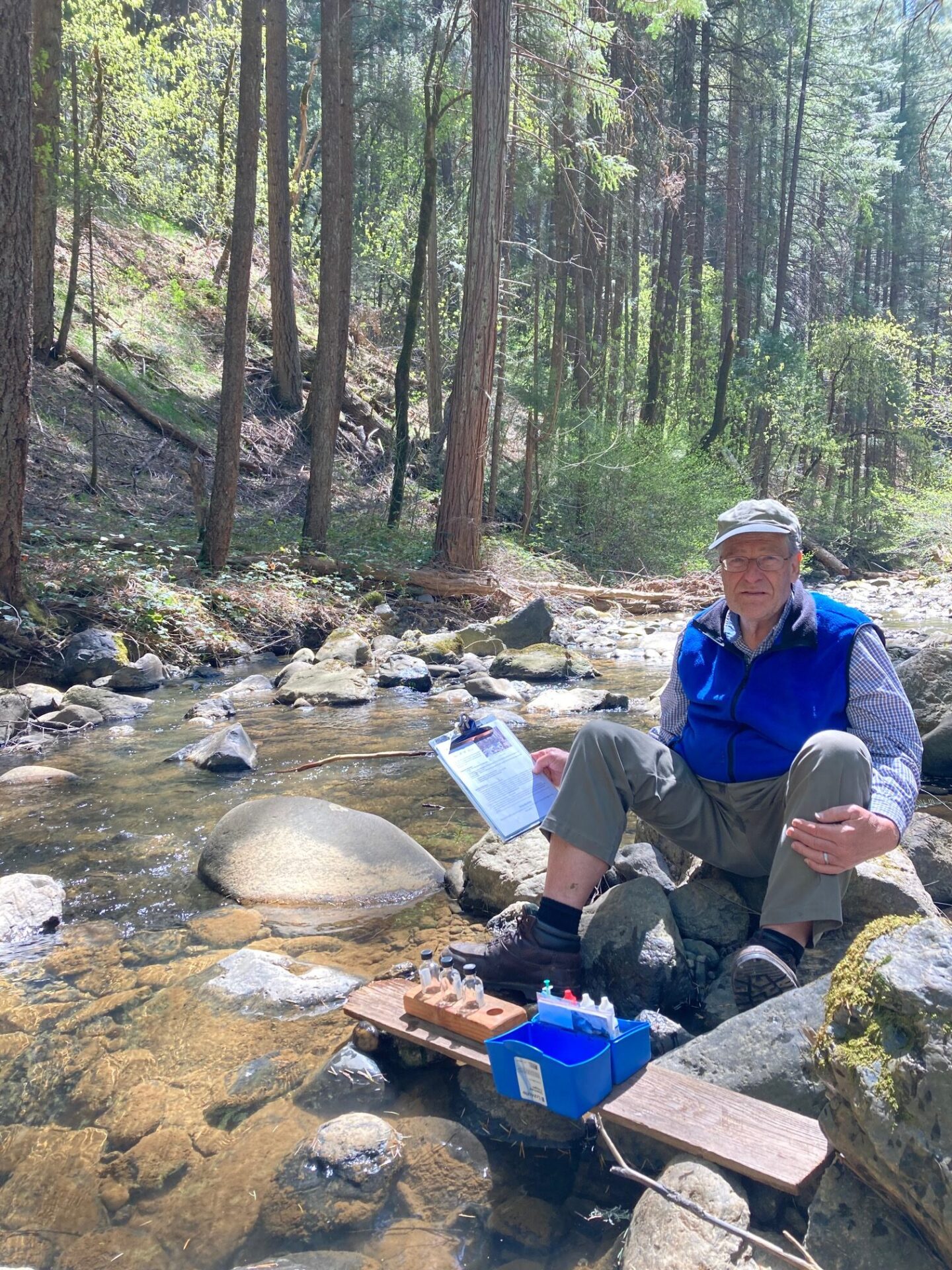
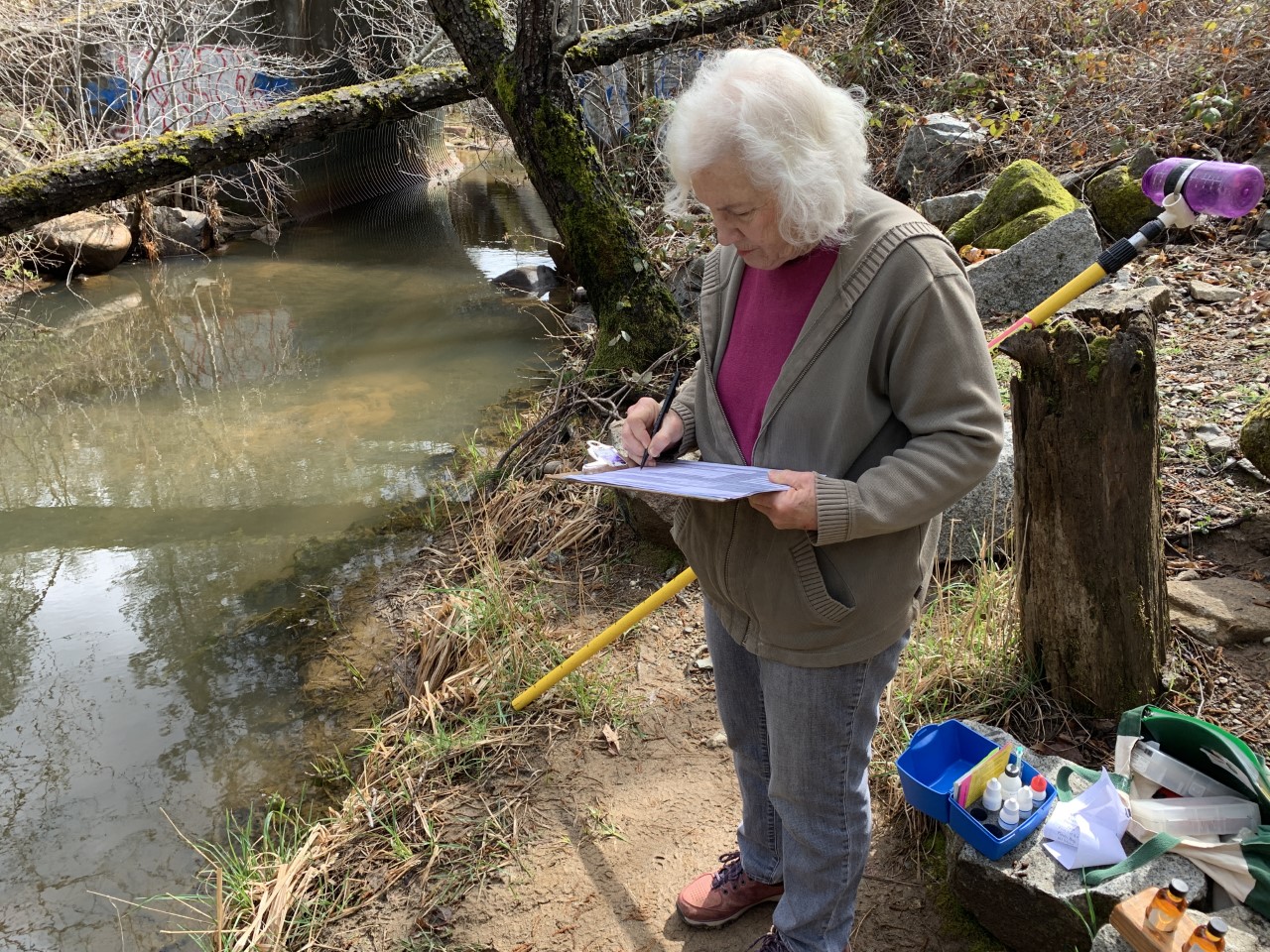

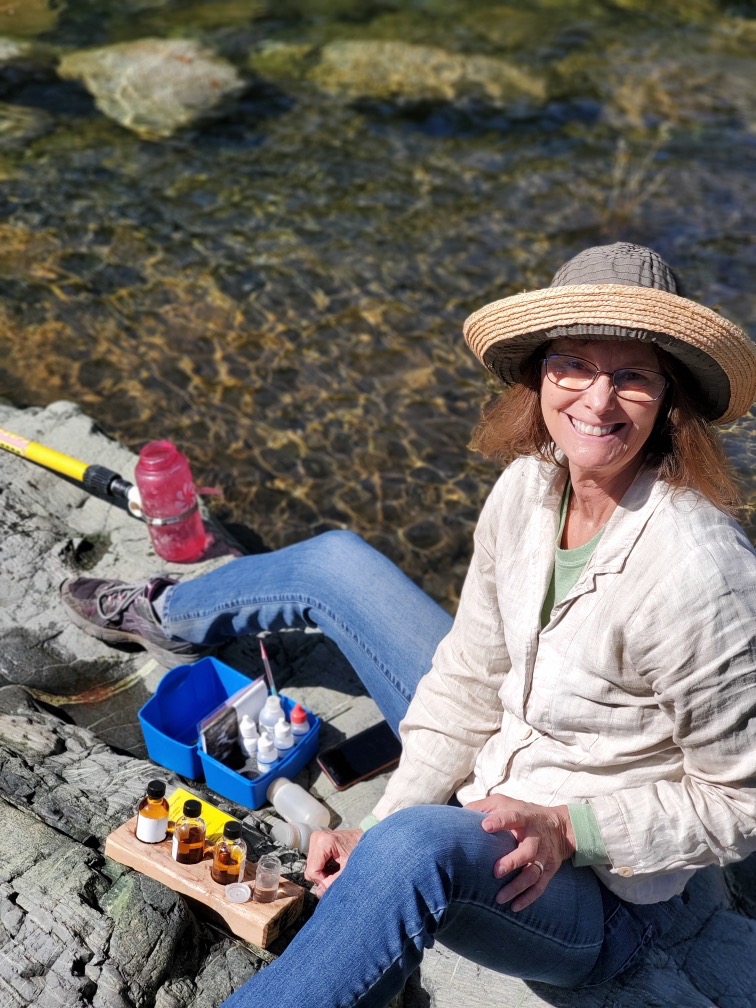
Did you enjoy this post?
Get new SYRCL articles delivered to your inbox by subscribing to our ENews.

